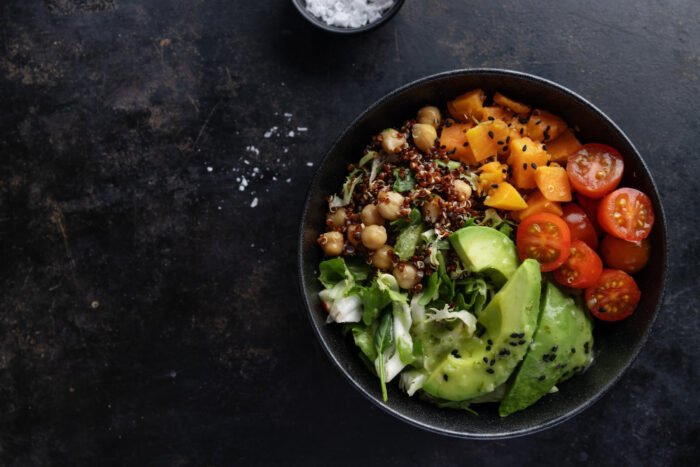Knowing the right grains to include in your diet is essential for good health
At one stage, I went from low to no carbs.
It’s dangerous to take bad advice from someone without in-depth knowledge regarding nutrition, women and hormones.
I learnt my lesson and went through a very prolonged stage where I wasn’t losing weight, and my frustration was magnified.
Those years were spent trying every diet, strategy and exercise there was.
Fasting intermittently was the only strategy that worked for me. Then, finally, it seemed to reset my metabolism, and my body began functioning as it should.
Carbs weren’t the enemy after all — it’s eliminating food groups that provide nutritional value for a lean body!
After all the setbacks I’ve experienced, I can safely say that controlling your food intake whilst balancing your carbs, fats, vegetables and protein — together with a proper exercise plan is the only thing that works.
Oh, and I forgot to add patience.
I fasted for well over five months before I got any results.
Still, I went through a phase of putting on weight anyway — although I was fasting.
You can bypass all that by being vigilant when selecting your nutritional options properly.
We need all the essential macros for our daily functioning and anything extra (like exercise and activity) we participate in.
Whole grains provide fibre, protein and other important vitamins. We mustn’t eliminate this unless we have a food allergy or intolerance.
Whole grains also help to control our blood glucose levels, reduce the risk of cardiovascular disease and help us to regulate our appetite.
Controlling our food intake is one of the most important weight loss and maintenance aspects, and it sure as hell makes maintaining your weight a lot effortless!
Here are the four best carbs since they contain the most abundant nutrient value and can improve your gut health.
One: Quinoa
Quinoa is one of the best complete plant proteins, containing a rich source of magnesium, folate, zinc and plenty of fibre.
Those with coeliac disease can rest assured that quinoa will be their go-to grain. In addition, quinoa is available in different colours to add more depth to your meal.
What I love most about quinoa is that you can eat it warm or cold in a salad, giving you a nice crispy and light texture.
Most people like to use it as a filler within meatloaf, in burgers instead of mince and when making stuffed tomatoes and peppers (in place of rice).
I don’t think there is anything you can’t pair with quinoa.
Two: Buckwheat
Buckwheat is available in flour, bread and many different bowls of cereal.
Buckwheat is yet another complete protein, combining essential amino acids.
I love eating activated buckwheat in my granola.
It provides a nice crunch and pop — much like rice bubbles but with more of a nutritional profile.
Using it as a flour alternative is appro, yound you can make bread and pancakes.
They are just as delicious (and a lot more healthy, mind you!).
Buckwheat is another healthy alternative for those who cannot tolerate wheat or are coeliac.
Three: Wild rice
Swapping out your regular white rice to head down the wilder side of life will give you fewer carbs per serving and a lot of nutrient value.
Wild rice contains much more fibre than regular rice and can be used as a substitute for pasta or potatoes.
If you are lucky, your favourite sushi parlour might use wild rice in your regular sushi (you can ask them to do this).
Pair wild rice with your favourite herbs and spices, and add garlic for a nice accompaniment to your protein and veggies.
Four: Bulgur
Bulgur is a staple for Middle eastern diets and is well-loved for its nutty flavour.
In addition, Bulgur contains many essential vitamins, such as iron, potassium, magnesium and plenty of fibre.
Cooking is relatively quick — and usually ready to eat in 10–15 minutes.
Bulgur is perfect if you are after something quick.
You can also pre-prepare it the day before, and it only contains 14 grams of carbs per 100g serving.
You could also use bulgar as a warm/cold salad mixed with tabbouleh.
Swapping your rice or pasta and using bulgar instead might be a nice alternative.
Using it when making burger patties is another delicious and low-carb alternative.
Key take away
Making small changes to your diet is one of the best places to start changing your food habits.
For example, swapping out white rice for wild or quinoa a few times a week will make a HUGE difference to your health.
Plus, it provides much nutritional variety and makes meal prepping much less boring.
Losing weight isn’t about eliminating the things you love but eating them in moderation whilst trying to include the best variety of whole foods to nourish your body, mind and soul.
As a result, not only will you start to change how you look, but you will experience the confidence that food can be your best path towards better health.
What whole grains from this list do you eat regularly, and what foods do you pair with them?
Please help support all the wonderful writers on this platform by subscribing to Medium here. It helps to encourage writers like myself who want to make a positive difference in people’s lives.
You can also follow me on YouTube for the latest, science-backed research on health, weight and weight training, and an endless supply of healthy recipes.
You may also like to download my FREE Fat Loss Recipe book.
I appreciate your support.
